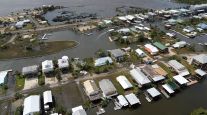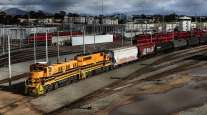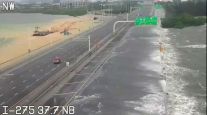‘Bomb Cyclone’ Wreaks Havoc on Roads, Barrels Toward Midwest
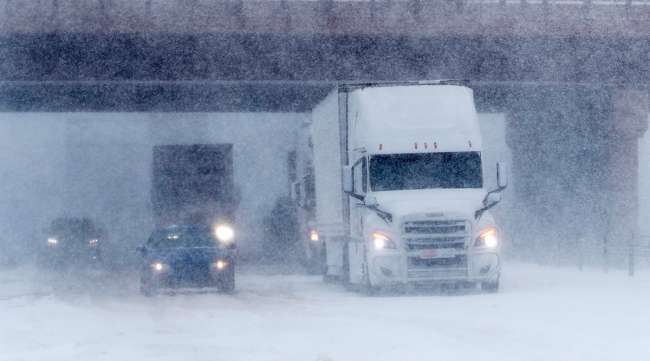
LONGMONT, Colo. — National Guard troops used specialized vehicles with tank-like treads to rescue stranded drivers in Colorado in the wake of a massive late-winter storm that unleashed heavy rain and snow on parts of the Midwest early March 14.
South Dakota’s governor closed all state offices March 14 as the blizzard conditions moved in, while wind, blowing snow and snow-packed roadways also made travel treacherous in western Nebraska. Heavy rain caused flooding in the eastern parts of both states and in Iowa.
MARCH 15 UPDATE: North Dakota interstates closed; flooding cripples other states
The blizzard in Colorado caused widespread power outages March 13, forced the cancellation of hundreds of flights and wreaked havoc on roadways as drivers became overwhelmed by blinding snow. A wind gust clocked in at 97 mph in Colorado Springs.
Semi truck being blown over and sliding into the ditch in Amarillo Tx!!! Extreme winds gusting to 80MPH with wind spread damage throughout the area. #txwx #highwindwarning pic.twitter.com/aTyVT2KyKb — Blake Brown (@BlakeBrownWx) March 13, 2019
The storm also contributed to the death of Corp. Daniel Groves, a Colorado State Patrol officer who was hit and killed by a car as he helped another driver who had slid off Interstate 76 near Denver.
“It is a tragic reminder that people’s lives are at stake,” said Shoshana Lew, head of the Colorado Department of Transportation. “The best place to be is at home and off the roads.”
Lew warned drivers that conditions would remain precarious at least through March 14.
About 200 vehicles were disabled on Interstate 25 near Colorado Springs, and many more drivers were being rescued on secondary roads, said Kyle Lester with the transportation department’s Division of Highway Maintenance.
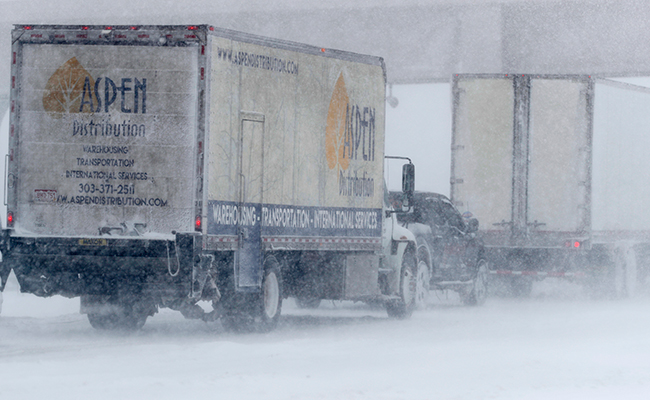
Vehicles stack up on the eastbound lanes of I-70 in Aurora, Colo., as a late winter storm packing hurricane-force winds and snow sweeps over the intermountain West March 13. (David Zalubowski/AP)
One of the stranded drivers was Bria McKenzie, 22, who with her mother, brother and sister, was stuck in her car for more than two hours on a hilly road in Colorado Springs. She said the snow was so blinding and numbing, and the wind was whipping so hard, she didn’t feel safe walking to a hospital that was just down the road.
“It was just like every second you were out there, it felt like parts of you were just freezing,” she said.
McKenzie and her family eventually were rescued by her father in his pickup.
The window-rattling storm brought blizzards, floods and a tornado across more than 25 states March 13, stretching from the northern Rocky Mountains to Texas and beyond.
“This is a very epic cyclone,” said Greg Carbin, chief of forecast operations for the National Oceanic and Atmospheric Administration’s Weather Prediction Center. “We’re looking at something that will go down in the history books.”
Check out this video sent in from one of our viewers of a semi truck blowing over near Canyon. (Courtesy: Todd Anderson)
MORE: https://t.co/5uXrKV1M3y pic.twitter.com/K9BGTiutq8 — KFDA NewsChannel10 (@NewsChannel10) March 13, 2019
Scores of motorists took refuge at truck stops in eastern Wyoming while blowing snow forced portions of major highways to close in Colorado, Nebraska and South Dakota. Meanwhile, hundreds of flights were canceled at Denver International Airport, and nearly 40 were grounded in Colorado Springs.
The wind-whipped storm forced schools and government offices across the state to close for the day and cut power to several hundred thousand homes and businesses. Xcel Energy spokesman Mark Stutz said zero visibility made conditions difficult for repair workers, and it could take days to restore power to everyone.
#Severe weather threat today stretching from the Great Lakes to the Gulf Coast. TOR:CONs are up to 4. @GregPostel, @twcMarkElliot and @juliemartin are LIVE now with latest on the warnings and storms. pic.twitter.com/KupCpZ1qwH — The Weather Channel (@weatherchannel) March 14, 2019
The culprit was a sudden and severe drop in ground-level air pressure in Colorado, the most pronounced dive since 1950, Carbin said. It was caused by a combination of the jet stream and normal conditions in the wind shadow of the Rockies.
Air rushed into the low-pressure area and then rose into the atmosphere.
“It’s like a vacuum cleaner, really,” Carbin said. When that much air rushes higher into the atmosphere, it causes severe weather.
Meteorologists call the rapid change in pressure a “bomb cyclone” or “bombogenesis.”
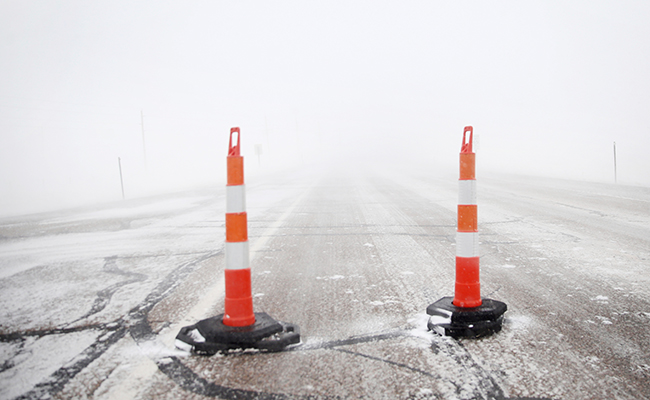
Cones block travel on Happy Jack Road during a blizzard March 13 in Cheyenne, Wyo. (Jacob Byk/The Wyoming Tribune Eagle via AP)
Parts of seven states were under blizzard warnings, and 20 states were under some level of high wind alert, Carbin said.
A tornado in New Mexico ripped roofs from buildings in the town of Dexter, about 200 miles southwest of Albuquerque. Authorities said five people were hurt, but none of the injuries was life-threatening. A dairy euthanized about 150 cows injured by the tornado.
Chaves County Sheriff Mike Herrington said the tornado “took out” about 10 homes on one street.
High winds knocked 25 railroad freight cars off a bridge into a mostly dry riverbed near Logan in northeast New Mexico. No one was injured, New Mexico State Police said.
Moen reported from Cheyenne, Wyo.. Also contributing were Associated Press reporters Gretchen Ehlke in Milwaukee; James Anderson and Thomas Peipert in Denver; Jeff Baenen in Minneapolis; Margery Beck and Josh Funk in Omaha, Neb.; Seth Borenstein in Washington; Paul Davenport in Phoenix; and Matt Volz in Helena, Mont.


